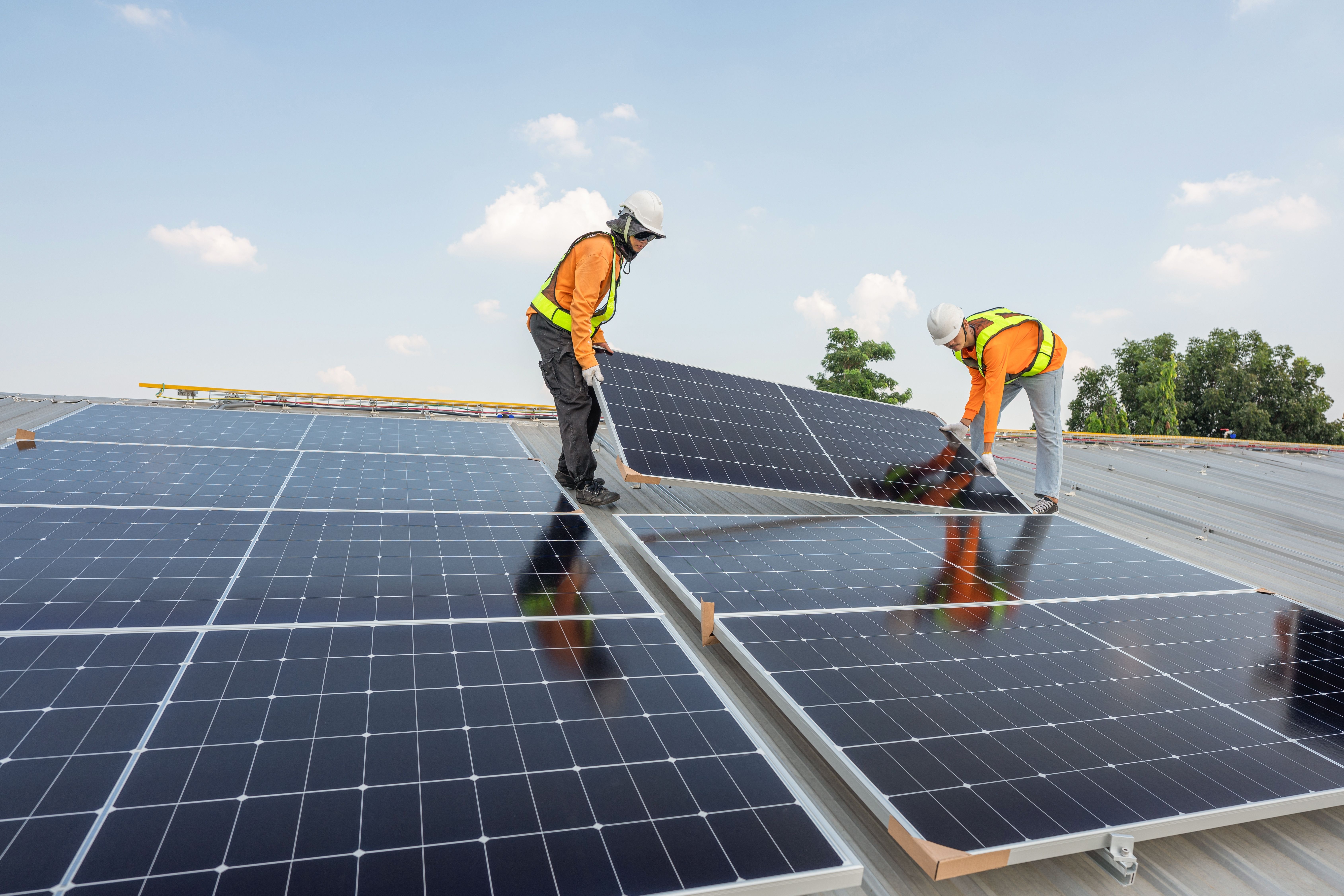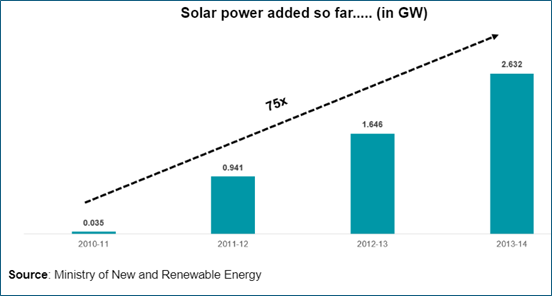Upstox Originals
India's solar saga: From potential to powerhouse

10 min read | Updated on October 29, 2024, 11:26 IST
SUMMARY
India has surpassed Japan to rank as the world’s 3rd largest solar energy generator in 2023. Solar’s share in India’s electricity mix soared from 0.5% in 2015 to 5.8% in 2023, reflecting a commitment to meet energy needs sustainably and curb carbon emissions. And, today, we will uncover the forces powering India's solar success and a glimpse into the future that lies ahead.

India has surpassed Japan to rank as the world’s 3rd largest solar energy generator in 2023
The Dawn of India’s Solar Revolution
It all started in 2010, sparked by the government's 2008 National Action Plan on Climate Change (NAPCC). Among the eight key initiatives in this plan was the "Jawaharlal Nehru National Solar Mission" (JNNSM), launched in January 2010.
However, the rapid decline in solar component costs that followed made this target seem less ambitious as the industry evolved.
The policy was divided in three phases:
| Application segment | Target for Phase-I (2010-2013) | Target for Phase -II (2013-2017) | Target for Phase-III (2017-2022) |
|---|---|---|---|
| Utility grid power, including roof top | 1-2 GW | 4-10 GW | 20 GW |
| Off-grid solar applications | 0.2 GW | 1 GW | 2 GW |
….
Meanwhile, Global Solar Power Costs Were Decreasing
During this period, the Levelized Cost of Electricity (LCOE)—which represents the average cost of producing electricity from a specific energy source over its lifetime—was falling significantly. The LCOE includes all related costs, such as capital, operational and maintenance, and financing costs.

Source: Renewable Power Generation Costs in 2022, International Renewable Energy Agency (IRENA)
China played a crucial role in this transformation, with its solar panel industry slashing global prices by 80% from 2008 to 2013.
A Look at India’s Progress till 2014

Source: Ministry of New and Renewable Energy
….
Development Post-2014
-
60 GW for grid-connected ground-mounted large solar power plants (typically above 1 MW capacity).
-
40 GW for rooftop solar power plants, designed to generate solar electricity at the point of consumption.
At that time, the Press Information Bureau remarked, "India is graduating from Megawatts to Gigawatts in Renewable Energy production."
….
Streamlining Solar Expansion: The Solar Park Initiative
Land acquisition and scattered project locations hindered solar energy expansion, leading to higher costs and transmission losses. To address these issues, the "Development of Solar Parks and Ultra-Mega Solar Power Projects" scheme was launched in December 2014.
This initiative streamlined project development by consolidating land procurement and providing essential infrastructure, reducing capital investment and project delays.

The world’s largest Solar Park: Bhadla Solar Park is a 2.25GW solar complex being developed in Bhadla village in Jodhpur district of Rajasthan, India.
….
ISTS Waiver: A Boost for Renewables
The Inter-State Transmission System (ISTS) encompasses high-voltage lines and substations for cross-state electricity transfer.
In 2016, the central government waived ISTS charges and losses for solar and wind projects to boost development in renewable-rich states and facilitate inter-state procurement.
….
Other Measures to Advance Solar Energy
To tackle land limitations, innovative approaches such as floating solar power plants, installations over canals, and using barren land are being promoted. Efforts to ease solar power procurement include the introduction of net metering, which allows consumers to offset their energy use with solar power. Large consumers, like the Delhi Metro, engage in interstate power purchases, and revised Renewable Purchase Obligations (RPO) set updated targets to boost renewable energy uptake.
Additionally, the Renewable Energy Corridor, launched in 2015, aims to create a dedicated transmission grid for areas abundant in solar and wind resources, improving energy distribution efficiency. ….
Rooftop Solar: Impressive Growth, Yet Unmet Goals
In December 2015, the Government introduced a grid-connected Rooftop Solar (RTS) program with incentives and subsidies for residential and institutional sectors. This initiative aimed to harness rooftop solar potential across the country.
Current Status: As of March 31, 2024, India had installed 11.87 GW of rooftop solar capacity, falling short of its target. Despite a notable 2.99 GW increase in 2023-2024, progress remains slower than desired
PM-Surya Ghar Muft Bijli Yojana: New Solar Boost
Significant changes are on the horizon with the introduction of the PM-Surya Ghar Muft Bijli Yojana on February 15, 2024. This scheme, with a budget of ₹75,021 crore, aims to install rooftop solar systems for one crore households, providing free electricity up to 300 units per month.
….
Meeting the Solar Surge: Supply Chain Challenges
India currently has 87.8 GW of solar power and aims to reach 300 GW by 2030. This ambitious goal necessitates numerous new solar projects, requiring a significant increase in modules and solar cells.
Are we self-sufficient to meet this demand?

-
The supply chain begins with converting silica minerals like quartzite into metallurgical-grade silicon, which is then transformed into polysilicon.
-
This polysilicon is next turned into an ingot that is cut and sliced into wafers.
-
To create a solar cell, the wafers are cleaned, textured, and doped with various gases, liquids, and materials.
-
Solar cells are then assembled to form a solar PV module.
….
Global Solar Supply Chain Dynamics

Source: International Energy Agency (IEA) data, as cited in Elements by Visual Capitalist
Why does China lead?
This dominance is largely due to lower electricity costs, which are critical since power constitutes more than 40% of polysilicon production costs and nearly 20% for ingots and wafers.
….
Understanding India’s Solar Manufacturing Landscape
India relies heavily on imports for solar cells and modules, with China and Vietnam as major suppliers. As of early 2023, China provided 53% of solar cell imports and 63% of solar PV modules. Domestic manufacturing is limited, mainly focusing on final production stages.
Indian solar exports on the other hand surged by 227% to $1.8 billion in 2023, driven by US restrictions on Chinese solar products. The US has become a significant market for Indian solar modules, following concerns over labor practices in China
India's Polysilicon Production Challenges
Domestic Module Manufacturing Initiatives
PLI Scheme: To boost domestic manufacturing, the Indian government introduced the Production-Linked Incentive (PLI) Scheme for PV Modules in two tranches
-
The first tranche, announced in April 2021 with a ₹4,500 crore budget, selected three developers.
-
The second tranche, approved in September 2022 with a ₹19,500 crore budget, chose eleven developers.
Together, these tranches aim to support the development of around 48,337 MW of domestic solar PV module manufacturing capacity.
Additionally, a 40% customs duty on PV modules and 25% on PV cells was implemented in April 2022 to encourage domestic production.
Reviving ALMM: Boosting Domestic Solar Capacity
The Approved List of Models and Manufacturers (ALMM) initiative, launched by India’s Ministry of New and Renewable Energy (MNRE) in 2019, was designed to ensure that only certified solar PV modules and manufacturers could participate in government-sponsored or subsidized projects.
Initially put on hold due to concerns about inadequate domestic manufacturing capacity and the lower quality of local modules, the ALMM mandate was recently revived.
….
Key Players Shaping India's Solar Sector
India's solar sector is powered by leading companies across the value chain.
For example Adani Energy Solutions is a major force, focusing on solar power generation and infrastructure, with ambitions to expand from manufacturing to large-scale projects.

Azure Power specializes in large-scale grid-connected installations, while Tata Power, one of the oldest and most trusted names, is involved in both power generation and solar module manufacturing.

Vikramsolar and Waaree Energies are key players in solar module manufacturing, delivering high-quality products for various projects.

Sterling & Wilson and Susten by Mahindra excel in the engineering, procurement, and construction (EPC) space, contributing significantly to the sector's growth.
Together, these companies form the backbone of India's solar industry, driving innovation and deployment nationwide. ….
Future of Solar: India’s Next Moves
India’s solar sector is evolving rapidly as successful bidders partner with global solar PV leaders or acquire stakes in them.
As India accelerates its journey toward renewable energy leadership, the future shines brighter than ever. With innovation, ambition, and unwavering momentum, India is not just embracing the sun's power—it's setting the stage for a greener, more sustainable world.
By signing up you agree to Upstox’s Terms & Conditions
About The Author
Next Story
